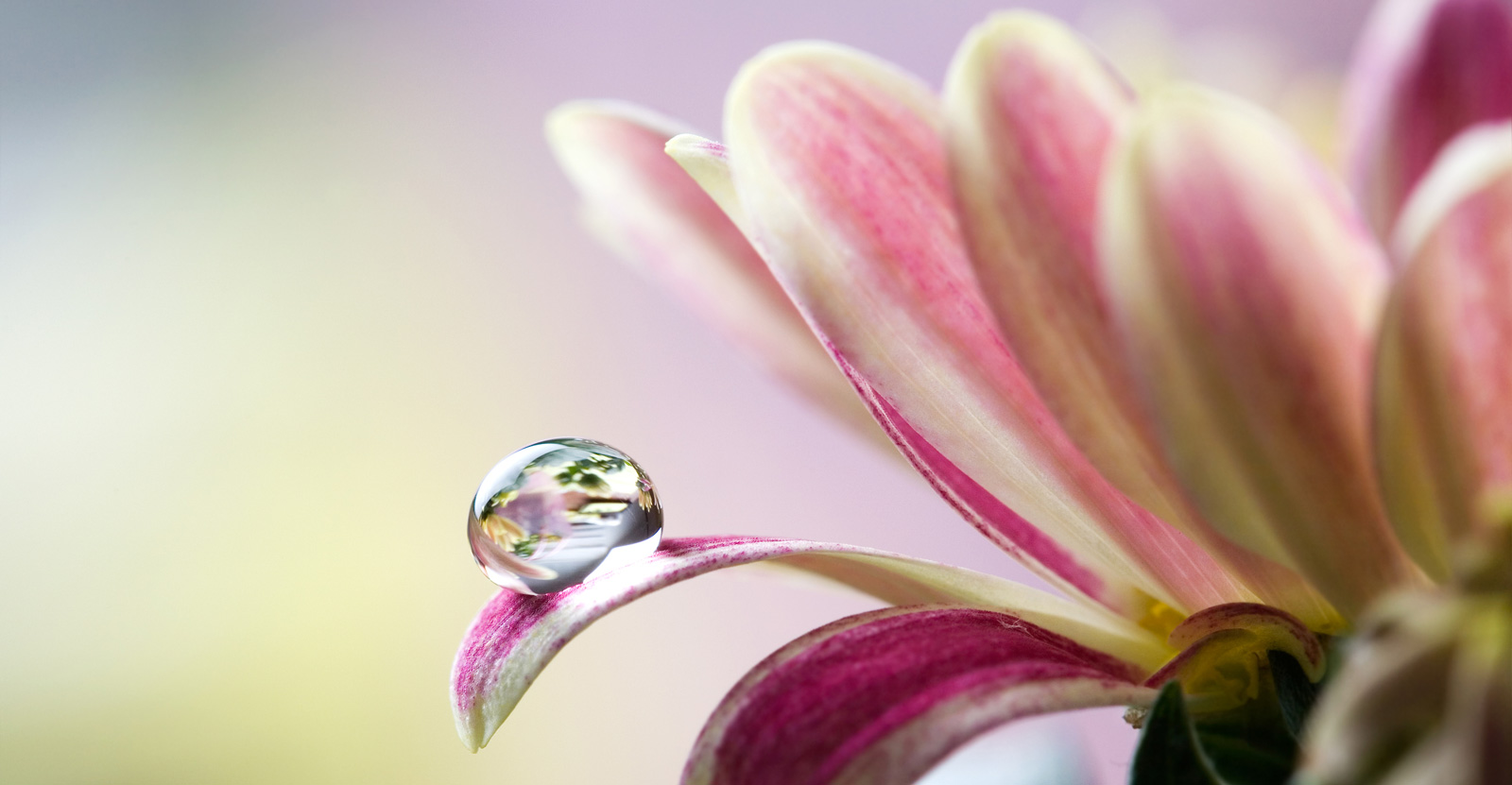Harold Davis is an award-winning professional photographer
and in this article he reveals some of his best secrets on how to take your floral photography to perfection. You don’t necessarily need any special equipment – sometimes just a mirror can make a big difference. Follow his example and see how stunning flowers really can be!
Photograph a flower from an unusual angle.
We’re used to seeing flowers from the front, straight on. In fact, that’s the way the creatures most important to flowers, their pollinators, usually see them. But often, the most interesting floral shapes occur when a flower is viewed in profile rather than head-on. Take the time to really study a flower before you start photographing it. You may be surprised at the many possibilities that aren’t initially apparent.
Control the areas of focus.
When looking at a photo, the viewer tends to first be attracted to the color and then to the areas in the photo that are in focus. So the parts of the flower that are in focus are very important to your overall composition. Keep this in mind as you control selective focus through your use of aperture and with camera positioning. The more parallel the camera is to the plane of focus, the less depth-of-field problems you’ll have.
If you don’t have a macro lens, improvise by using an extension tube.
An extension tube is a relatively inexpensive tube that fits between your lens and the camera. Using an extension tube makes most lenses able to focus closer and produces images that have a greater effective magnification. I’ve created very good professional-quality macro photos of flowers using extension tubes and a zoom lens instead of a macro lens.
Keep your photos sharp by using a tripod.
I use a tripod for most of my macro flower photography. You want a tripod model that lets you maneuver easily close to the flower and a ballhead for variable camera positioning. Be sure to use a remote release with the tripod (or use the self-timer) rather than pressing the shutter yourself to avoid causing camera movement. In most cases, image stabilization should be turned off when the camera is on a tripod. Locking up your mirror can add significant sharpness at shutter speeds between 1?60 sec. and 2 sec.
Deliberately throw your lens out of focus.
Experiment with throwing your lens way out of focus on purpose (you’ll need to take your lens off autofocus to do this). Out-of-focus flower images can be hugely colorful and wildly evocative.
Generally, this works best with a telephoto lens and a wide-open aperture. If your photo is out of focus, you want people to know that you did it on purpose and not think that it might be simply a mistake.
Shoot on a mirror.
One of my most used props for flower photography is a mirror. This is inexpensive and easy to find. Go to any window-repair store and order a piece of mirror-backed plate glass. A small shooting surface (18×24 inches) should cost less than $20.
GO TO THE NEXT PAGE FOR THE VIDEO
Read the full article over at Digital Photo Magazine.
Source: Digital Photo Magazine


Konrad Potocki
Ally Graham